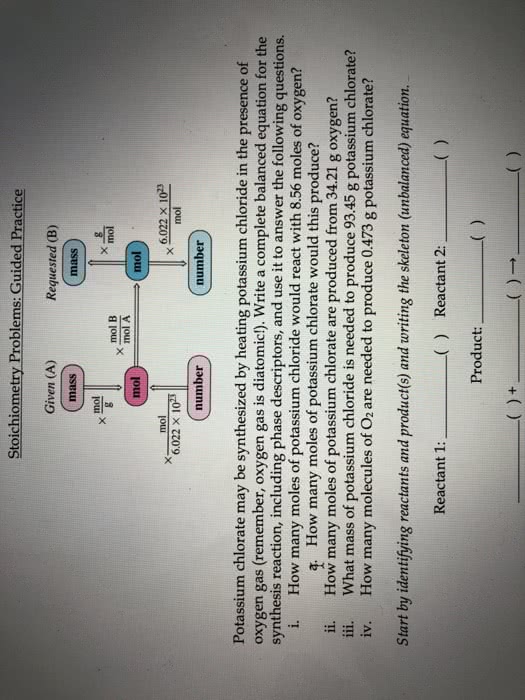CHEM10007 Lecture 10: Lecture 10 - Stoichiometry (1)

LECTURE 10 - STOICHIOMETRY
CHAPTER 4 - CHEMICAL REACTIONS & STOICHIOMETRY
4.6 STOICHIOMETRY, LIMITING REAGENTS & PERCENTAGE YIELD
•The link between amounts of substances involved in a reaction is a mole-to-mole ratio obtained
from the chemical equation that describes the reaction.
•Eg
•2 molecules of octane react with 25 molecules of oxygen gas and create 16 molecules of carbon
dioxide and 18 molecules of water vapour.
•2 moles of octane react with 25 moles of oxygen gas and create 16 moles of carbon dioxide and
18 moles of water vapour.
•Chemical equations identify reactants & products, identify the state of reactants and products and
gives the ratios in which the substances react and are formed.
•The mol ratio is the coefficient (2H2 = 2 mol of hydrogen gas)
MOLE RATIOS IN CHEMICAL REACTIONS
•We often need to relate the mass of one substance to the mass of another in a chemical reaction.
•Consider the reaction of glucose and oxygen.
•What mass of O must the body take in to completely process 1.00g of glucose?
•The equation tells us that 1 mol of C6H12O6 will react completely with 6 moles of O2.
•1. We obtain the amount of C6H12O6 from the mass of C6H12O6 using the molar mass of
C6H12O6.
•2. We then obtain the amount of O2 from the amount of C6H12O6 using the stoichiometry of
the balanced equation.
•3. We obtain the mass of O2 from the amount of O2 using the molar mass of O2.
LIMITING REAGENTS
Document Summary
We obtain the amount of c6h12o6 from the mass of c6h12o6 using the molar mass of. We then obtain the amount of o2 from the amount of c6h12o6 using the stoichiometry of the balanced equation: 3. We obtain the mass of o2 from the amount of o2 using the molar mass of o2. Percentage yield: gases are characterised by the fact that, in contrast to liquids and solids, they expand to occupy the entire space of their contained. The mole is the mass of the sample/mass of 1 mole of the sample. It is the mass of 1 mol of particles of the element. Stoichiometry: the calculations that chemists do, using mol ratios and balanced equations, allow for calculations for how much reactant will produce a certain amount of product, info may be given about both reactants. Chemical equations: when a hydrocarbon is burnt in oxygen, co2 and h2o are produced.



